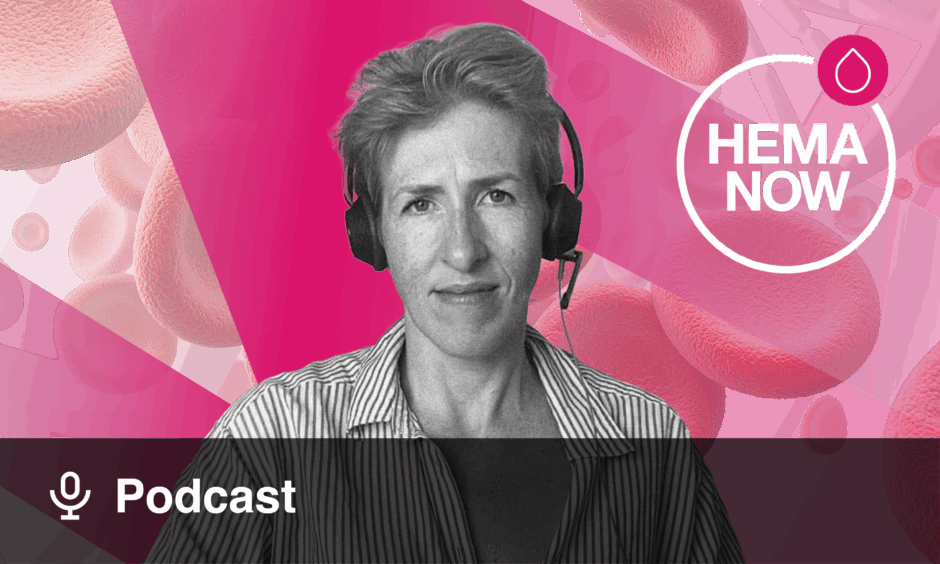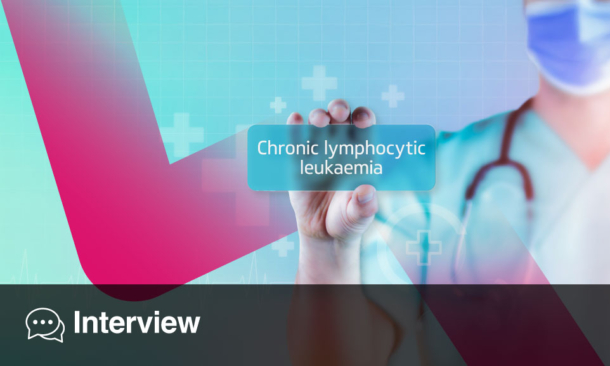THE 51st Annual Meeting of the European Society for Blood and Marrow Transplantation (EBMT) was held this year in the vibrant city of Florence, Italy, from 30th March–2nd April 2025. Renowned for its architectural splendour and rich artistic legacy, Florence provided a stunning and fitting backdrop for this prestigious congress. With over 6,000 attendees, 1,324 submitted abstracts, and representation from 97 countries, this year’s congress was a resounding success, further cementing EBMT’s role as a global leader in shaping the future of haematopoietic cell transplantation and cellular therapy.
Inside the Fortezza Da Basso Congress, the venue for this year’s meeting, there was an undeniable energy as attendees from around the globe gathered. It served as an epicentre for colleagues to connect, collaborate, and engage with the latest research driving innovation in haematology. The opening ceremony, led by the esteemed Congress President, Anna Sureda, Institute Català d’Oncologia – Hospitalet, Barcelona, Spain, included an introduction to the EBMT Patient Advocacy Committee and Nurses Group, followed by a celebratory awards ceremony and several insightful keynote lectures. Sureda extended her heartfelt thanks to the Scientific Committee, speakers, chairs, volunteers, and EBMT team for their unwavering dedication to the congress. She also paid special tribute to Riccardo Saccardi, who sadly passed in 2024: “Riccardo was not only a brilliant clinician and researcher, but also a mentor, a leader, and a deep friend for many of us.”
Natasha Bolaños, Lymphoma Coalition, highlighted the ongoing work of the EBMT Patient Advocacy Committee, a group dedicated to keeping EBMT patient-centric as a scientific society. As Bolaños emphasised, patients bring valuable lived expertise that can inform medical innovation, regulatory processes, healthcare programmes, and more. As the President, Michelle Kenyon spoke on behalf of the EBMT Nurses Group, highlighting the vital role nurses play in supporting patients through challenging times. She shared a deeply moving letter from an anonymous patient with acute myeloid leukemia, to their stem cell donor. In it, the patient reflected on the impact of their diagnosis, and the miracle of being matched with a donor. The letter served as a powerful and emotional reminder of the life-saving importance of stem cell transplantation.
Honorary membership was awarded to four individuals as recognition for their dedication to the society and invaluable contributions to haematopoietic stem cell (HSCT) transplantation and cellular therapy. These were Catherine Cordonnier, Henri Mondor University Hospital, Créteil, France; Myriam Labopin, Hospital Saint-Antoine, Paris, France; Nobert Schmitz, Asklepios St. Georg Clinic, Hamburg, Germany; and Gérard Socié, AP-HP Hospital St Louis, Paris, France.
Gianluigi Mancardi, University of Genova, Italy, a long-term colleague and friend of Saccardi, gave a tribute lecture, summarising the instrumental research he and Saccardi conducted into the clinical potential HSCT in multiple sclerosis (MS). The GITMO-NEURO, for example, is a collaborative network of Italian medical centres that investigates the use of autologous HSCT (aHSCT) for MS. A review published in 2017 also concluded that complete suppression of MS activity for 4–5 years has been documented in 70–80% of patients with relapse-remitting MS who have undergone aHSCT.1 Finally, he spotlighted several promising Phase III trials currently ongoing, including RAM-MS, BEAT-MS, STAR-MS, and NET-MS.
Mancardi also highlighted the decline in transplant-related mortality, which dropped from 5–6% in early cohorts to 1–2% by 2008.2 This improvement was attributed to several factors, including better patient selection and the growing expertise of both neurologists and haematologists involved in the procedure.
Finally, Franco Locatelli, Director of the Department of Pediatric Hematology and Oncology, IRCCS Ospedale Pediatrico Bambino Gesù Children’s Hospital, Rome Italy; and Luigi Naldini, Director, SR-Tiget, San Raffaele Telethon Institute for Gene Therapy, Milan, Italy, each gave an insightful keynote lecture, exploring the journey from bench to bedside for CAR-T cell therapy.
In conclusion, the 51st Annual EBMT Meeting was a powerful reflection of how science, compassion, and collaboration can come together to improve lives. As the field continues to progress, EBMT remains a beacon for innovation and patient-centred care on the global stage.
New Dual Therapy Effective in Hodgkin Lymphoma
PRESENTED by Gunjan L. Shah, Memorial Sloan Kettering Cancer Center, New York, USA, this abstract was awarded the most prestigious EBMT award, the Van Bekkum Award, at the 51st Annual Meeting. It explored a cutting-edge cell therapy combination offering new hope for patients with relapsed or refractory classical Hodgkin lymphoma.3
This Phase II study, LuminICE-203, paired acimtamig (AFM13), a bispecific antibody targeting CD30 and CD16A, with AlloNK® (AB-101; Artiva Biotherapeutics, California, USA), a cryopreserved, off-the-shelf natural killer (NK) cell product derived from cord blood. This dual approach is designed to trigger an immune response against CD30+ lymphoma cells in patients who have exhausted standard treatments, including combination chemotherapy, brentuximab vedotin, and programmed cell death protein 1 inhibitors. The primary end point was objective response rate (ORR), with secondary endpoints including safety, tolerability, immunogenicity, complete response rate and duration of response.
The trial enrolled 22 patients in its initial dose-finding phase. These patients, with a median age of 42.5 years and a median of five prior lines of therapy, received varying doses of the drug-cell combination across multiple centres. Treatment was well-tolerated, with no unexpected safety issues and no cases of neurotoxicity or graft-versus-host disease. The most common side effects were mild infusion-related reactions and nausea.
Efficacy results were encouraging. The objective response rate was 86.4%, with more than half of patients (54.5%) achieving a complete response. Notably, responses were seen across all dosing cohorts.
The researchers emphasised the potential of pairing bispecific antibodies with off-the-shelf NK cell products to provide a scalable and effective treatment for heavily pretreated individuals with classical Hodgkin lymphoma, many of whom currently face limited options. The trial is ongoing, with expansion cohorts now underway to further validate these findings.
Low CD19 Expression Linked to Poor CAR-T Outcomes in Lymphoma
AN INSIGHTFUL study revealed that very low CD19 expression is linked to poor outcomes in patients with large B cell lymphoma treated with CD19-directed CAR-T cell therapy. Presented by Magdalena Corona, Hospital Universitario 12 de Octubre, Madrid, Spain, at the 51st Annual Meeting of EBMT, this study was awarded the prestigious Jian-Jian Award for Lymphoma Transplant Research.4 It aimed to determine whether genotypic and phenotypic modulation of CD19 influences the efficacy of CD19-directed CAR-T cell therapy in large B cell lymphoma, and whether such modulation remains detectable after treatment.
The research, conducted at a single centre, examined tumour samples from 204 patients with large B cell lymphoma, both before and after CAR-T therapy. A range of advanced techniques were utilised, including flow cytometry, RNA sequencing, and whole-exome sequencing. Researchers categorised patients based on their CD19 expression levels (high, normal/low, and very low) relative to healthy donor B cells.
Flow cytometry, the most commonly used method, showed that 36% of patients had high CD19 levels before CAR-T treatment, while 15% had very low levels. Those with very low CD19 expression were significantly less likely to achieve a complete response (odds ratio: 3.31; 95% CI: 1.02–11.1; p=0.047) and had shorter progression-free survival (PFS).
In a subset of 33 patients, with samples taken before and after treatment, CD19 levels decreased in patients who relapsed after an initial response to CAR-T. However, in those who never responded to CAR-T (primary refractory), CD19 levels remained unchanged. Very low CD19 RNA levels prior to treatment were also linked to shorter PFS compared to normal/high expression. Moreover, gene enrichment analysis identified an inverse relationship between Gene-set enrichment analysis showed an inverse relationship between CD19 RNA expression and inflammatory pathway expression, notably IFN-γ and IL6-JAK-STAT3. Additionally, DNA analysis showed CD19 gene gains in some cases but no CD19 mutations, indicating that changes in gene expression, rather than mutation, may play a greater role in resistance.
Additionally, among cases with whole-exome sequencing data (n=63 patients; 58 pre-CAR-T and 15 post-CAR-T samples), CD19 copy number alterations (primarily gains) were found in 26% of pre-CAR-T samples and 40% of post-CAR-T samples (p=0.3).
In this large single-centre study, reduced CD19 expression, particularly very low levels, was associated with poorer responses and shorter PFS following CD19-directed CAR-T therapy in large B cell lymphoma. These findings suggest that both the level and dynamics of CD19 expression may influence resistance patterns and clinical outcomes.
Origins of Clonal Blood Mutations After Childhood Transplant
A GROUNDBREAKING study has found that long-term survivors of paediatric haematopoietic cell transplantation (HCT) are significantly more likely to develop clonal haematopoiesis (CH), a condition marked by mutated blood-forming stem cells, than those who have never undergone transplant. It was presented at the 51st Annual Meeting of EBMT by Konradin Müskens, Princess Máxima Center, Utrecht, the Netherlands, and was commended the prestigious Basic Science Award.5
Researchers analysed blood samples from 144 long-term (>5 years) paediatric HCT survivors and 258 non-translated controls, discovering that 16% of transplant recipients had detectable CH mutations compared to just 8% of controls. Importantly, larger clones (with higher mutation levels) were only found in the transplant group.
The mutations, most commonly in the DNMT3A (80%) and TET2 (20%) genes, were linked to older stem cell age and the transplant process itself, both of which independently increased CH risk. Using single-cell whole genome sequencing, researchers traced the origins of these mutations, finding they were often present long before transplant, some even as early as during early foetal development.
Interestingly, although CH mutations are often associated with ageing, the mutation patterns in HCT survivors were similar to those seen in normal ageing, rather than caused by transplant-related damage. However, inflammatory events around graft infusion were associated with CH development, highlighting how transplant stress can promote clonal expansion.
Given the long-life expectancy of paediatric HCT survivors, these findings underscore the need for ongoing monitoring and early intervention strategies to manage potential long-term risks linked to CH. The study adds critical insight into how early-life mutations can resurface decades later under selective pressures like transplantation.





